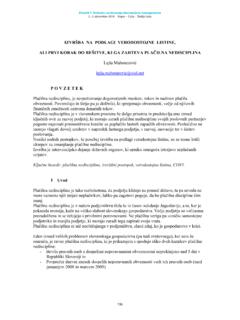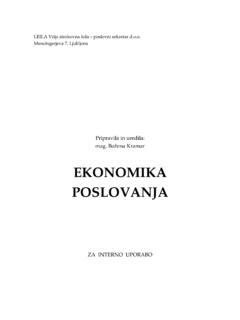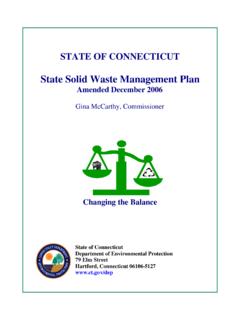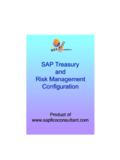Transcription of Workplace Health and Safety - Cleaning …
1 Workplace Health and Safety in the Cleaning Industry A Guide to Risk Management Acknowledgements These guidelines were developed by the Department of Training and Industrial Relations in partnership with the Queensland Chamber of Commerce and Industry. The assistance of the following is gratefully acknowledged: Achieve Cleaning Services Australian Liquor and Hospitality Miscellaneous Workers' Union Australian Building Services Association Berkely Challenge Eaton Cleaning Services Resort Cleaning Services Swan Services 1. 2. Managing Risk If you're in business, you know about managing risk.
2 Your survival depends on it! Property insurance, workers' compensation insurance, bank all involve carefully calculated risk. But what about Workplace Health and Safety ? What are the risks faced by workers in the Cleaning business? As an employer, you should know. You have an obligation, under the Workplace Health and Safety Act 1995, to ensure the Health and Safety of your staff, your customers, even visitors. This can be difficult, because your workers may often operate alone, in workplaces owned by other people. This guide will help you to identify the hazards associated with your industry, to assess the risks to Health and Safety , and if necessary, to eliminate them, or reduce them to an acceptable level.
3 Hazards The Macquarie Dictionary defines a hazard as a potential source of harm. There are hazards in every Workplace . In the Cleaning industry, for example, caustic soda a common Cleaning agent, is a hazard because it has the potential to cause skin and eye damage. An industrial polisher is a hazard because it has a powerful electric motor. The Macquarie Dictionary defines a risk as exposure to the chance of injury or loss.. Risks When caustic soda is properly used, for the purpose for which it is intended, by someone who knows how to use it, there is very little chance of injury.
4 The risk is low. On the other hand, if it is splashed about by an untrained or careless person, the risk of injury is high. If an industrial polisher is well maintained and used by a trained operator the risk of electric shock is low. If it used by an untrained operator, or when it is known to be faulty, or if it is poorly maintained, the risk is high. The level of risk depends on the way the situation is managed. As an employer, you must identify the hazards in your Workplace . You must assess their potential to cause harm. Some pose a significant threat to Health and Safety ; others are relatively low risk.
5 Then, if necessary, you must take steps to reduce the exposure of everyone in your Workplace (or workplaces) to the chance of injury; you must control the risk, either by eliminating it, or by reducing it to an acceptable level. 3. Control Measures - The Hierarchy of Control. To control the level of risk posed by a hazard in your Workplace you have a number of options: In order, these are. The most desirable option. If you eliminate a hazard you elimination completely eliminate the associated risk. You can substitute something else (a tool or a process) that has Substitution less potential to cause injury.
6 Separation You can separate workers from the hazard. Redesign You can redesign a process or equipment to make it safer. Administration You may be able to reduce risk by upgrading training, changing rosters, or other administrative actions. Personal Protective The least desirable option. When you can't reduce the risk of injury in any other way, use personal protective equipment Equipment (gloves, goggles, etc) as a last resort. In practice, several control options are often used in combination. Review: When you have put a control option (or a combination of control options) into practice, you must review it after a period of time to make sure it is actually reducing the risk.
7 4. leaning Industry Hazard Cleaning industry People in the Cleaning industry have identified five major hazards. They are: Any activity requiring a person to use force to lift, lower, push, pull, carry or otherwise move or restrain an object. Manual handling tasks include lifting heavy cartons or equipment 1. Manual Handling repetitive or forceful movements work carried out in awkward postures. Injuries may happen as a result of a one-off event, but more often they are the result of stress and strain over a long period of time. The characteristics of the area where you work.
8 Elements include floors and other surfaces, noise, lighting, temperature, ventilation, accessibility and housekeeping. The most common causes of injury arising from the work environment in the Cleaning industry are slips, trips and falls. Slips, trips and falls can occur when: walking on slippery floors after mopping vacuuming around fixtures and furnishings working in a cluttered space collecting and disposing of rubbish 2. The Work Environment carrying equipment on stairs; and water blasting. Electrical equipment is widely used in the Cleaning industry.
9 Because of frequent use and possible abuse, its electrical Safety may be compromised, exposing workers to the risk of shock, burns, or fatal injury. Electrical accidents are usually caused by: using faulty equipment working with damaged leads 3. Electricity unsafe work practices, or a combination of the above. 5. hazards Cleaners can sustain injuries from broken glass, discarded sharp objects and needles. Penetrating wounds break the normal protective barrier provided by the skin and allow infection to enter. Serious infections such as Hepatitis B and HIV.
10 Can enter the body in this way. 4. Sharps - Skin Skin penetrating injuries can be sustained when: carrying rubbish penetrating Injuries Cleaning toilets and other amenities; and disposing of clinical waste. Hazardous substances (chemicals) are widely used in the Cleaning industry. After exposure to a hazardous substance, a person may take some time to show signs of ill Health . Hazardous substances used in the Cleaning industry include: hydrochloric acid tetrachloroethylene - carpet cleaners and spotters 5. Hazardous sodium hydroxide - oven cleaners Substances sodium hypochlorite - bleach Workers may be exposed when: filling containers.







